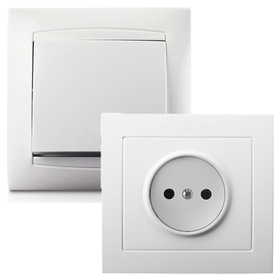Introduction: Switches are the unsung heroes of modern technology. From controlling lights in our homes to managing complex networks in data centers, switches play a vital role in enabling communication and facilitating functionality. However, their importance is often overlooked, and their capabilities remain underexplored. In this comprehensive guide, we delve into the world of switches, uncovering their functionalities, applications, and the advancements shaping their future.

Understanding Switches: At its core, a switch is a device that connects devices within a network, allowing them to communicate with each other. Unlike hubs, which simply broadcast data to all connected devices, switches intelligently direct lülitid data packets only to their intended recipients, optimizing network efficiency.
Types of Switches: Switches come in various types, each tailored to specific needs and environments. Some common types include:
- Unmanaged Switches: Simple and cost-effective, unmanaged switches provide basic connectivity without the need for configuration.
- Managed Switches: Offering advanced features such as VLAN support, Quality of Service (QoS), and security protocols, managed switches provide greater control and customization options.
- Layer 2 Switches: Operating at the data link layer of the OSI model, layer 2 switches forward packets based on MAC addresses, making them ideal for local area networks (LANs).
- Layer 3 Switches: Combining the functionalities of switches and routers, layer 3 switches can route data based on IP addresses, enabling them to connect multiple networks.
Applications of Switches: Switches find applications across various industries and settings, including:
- Home Networking: Switches are commonly used to connect devices within a home network, such as computers, printers, and smart appliances, facilitating seamless communication and resource sharing.
- Enterprise Networks: In large-scale enterprise networks, switches form the backbone, enabling efficient data transmission among interconnected devices, servers, and storage systems.
- Industrial Automation: Industrial switches play a critical role in automation systems, connecting sensors, actuators, and control devices to optimize manufacturing processes and monitor operations in real-time.
- Telecommunications: Switches are integral to telecommunications networks, routing voice, data, and multimedia traffic across different network segments with high reliability and speed.
Advancements and Future Trends: The landscape of networking continues to evolve, driven by technological advancements and emerging trends. Some notable developments shaping the future of switches include:
- Software-Defined Networking (SDN): SDN decouples the control plane from the data plane, enabling centralized network management and programmable configuration, leading to greater flexibility and scalability.
- Intent-Based Networking (IBN): IBN leverages automation and machine learning to translate high-level business objectives into network policies, simplifying network management and enhancing security.
- Multi-Gigabit Ethernet: With the proliferation of bandwidth-intensive applications and devices, multi-gigabit Ethernet switches capable of supporting speeds beyond 1 Gbps are becoming increasingly prevalent, catering to the demands of modern networks.
- Edge Computing: The rise of edge computing architectures requires switches that can efficiently process and route data at the network edge, reducing latency and enabling real-time analysis and decision-making.
Conclusion: Switches are the backbone of modern communication networks, enabling seamless connectivity and efficient data transmission across various environments. By understanding their functionalities, applications, and the latest advancements, organizations can harness the full potential of switches to build robust and scalable networks that meet the demands of today’s digital world. As technology continues to evolve, the role of switches will remain pivotal, driving innovation and connectivity in the years to come.
